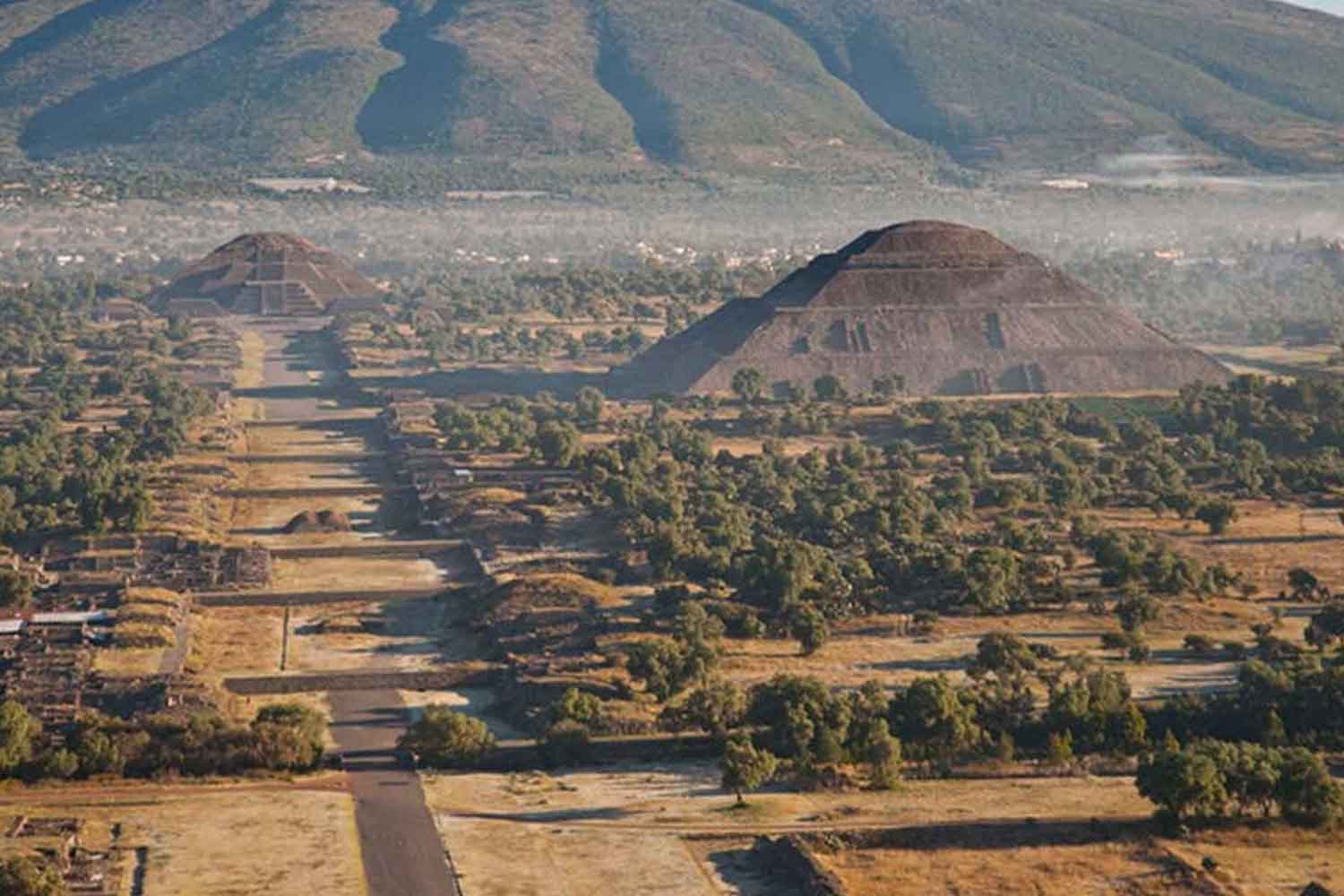Two European scholars claim to have deciphered the code of Teotihuacan: the city's glyphs could represent an archaic Uto-Aztecan language, directly connecting this ancient civilization to the Aztecs

Anyone who has visited Teotihuacan at least once, in the heart of central Mexico, knows the visual power of its monumental pyramids, its long stone avenues, and its murals still alive with color. Yet behind the majesty of this archaeological site remains an open question: what language did its inhabitants speak?
A new study from the University of Copenhagen, published in the journal Current Anthropology, attempts to provide an answer. The two researchers, Christopher Helmke and Magnus Pharao Hansen, argue that the symbols visible on murals and ceramics are not merely graphic or decorative elements. After careful analysis, they believe these are structured linguistic signs, similar to writing systems already known in Mesoamerica, such as that of the Maya. And according to their interpretation, those symbols would contain traces of an ancient language belonging to the Uto-Aztecan language group, the same family to which Nahuatl belongs, still spoken today in various regions of Mexico.
The researchers explained that if this hypothesis were confirmed, they would not only have identified a previously unknown writing system, but could also have shed light on one of the most complex enigmas of Mesoamerican archaeology: the linguistic and cultural identity of Teotihuacan’s inhabitants.
Teotihuacan, the voiceless city, could finally tell its story
Founded around 100 BC, Teotihuacan experienced a period of maximum splendor for over six centuries, reaching a population of up to 125,000 inhabitants. The city’s influence extended well beyond the Valley of Mexico, which is why scholars have often called it the “Rome of the Americas”.
Unlike the Maya or the Aztecs, however, the inhabitants of Teotihuacan left no recognizable codices or written texts. The symbols decorating the city’s buildings and objects – depictions of jaguars, birds, geometric figures – have long been considered religious or aesthetic symbols, devoid of true linguistic content.
Helmke and Pharao Hansen instead observed that these signs share key elements with other Mesoamerican writing systems, including the use of logograms (signs representing words) and the rebus principle, in which images are combined to create sounds or complex concepts.
In their study, the two researchers also introduce the concept of “double orthography”: this would be a technique used by scribes to reinforce a meaning or sound through repetition or juxtaposition of similar symbols. According to their findings, this characteristic would suggest that the system was much more sophisticated than previously thought, and firmly rooted in a spoken language.
The real novelty of the study concerns the language hidden behind those symbols. The two authors explain that, according to their analysis, it would be an ancient variant of a Uto-Aztecan language, not documented in written form but reconstructed through linguistic reconstruction work. This language, they say, could be a direct ancestor of Nahuatl, the language spoken by the Aztecs, but also of Cora and Huichol, still in use in some regions of western Mexico.
Pharao Hansen emphasized that no one, until now, had tried to interpret these signs using a language consistent with the historical period of Teotihuacan, nor had it ever been demonstrated that some logograms had a phonetic value applicable in different contexts. Their method, therefore, would consist of reconstructing the lost language based on historical and linguistic data, and then applying it to decipher the symbols.
Helmke clarified that reading these texts using a modern language would be misleading, just as it would be wrong to try to interpret ancient Scandinavian runes with today’s Danish. For this reason, the two scholars adopted an approach closer to the original context, which they define as “linguistic archaeology”.
New hypotheses about the Aztecs: what if they were direct descendants of the Teotihuacanos?
Until now, it was always believed that Nahuatl speakers – like the Aztecs – arrived in the Valley of Mexico region after the end of Teotihuacan, occupying a territory that had already been abandoned. This new research, however, challenges that idea.
According to Helmke and Pharao Hansen, there would be linguistic continuity between Teotihuacan and subsequent Nahua cultures. If the hypothesis proved correct, the Aztecs would not have arrived “after,” but would be direct heirs of the Teotihuacan civilization, and Nahuatl could have developed precisely from that lost language.
This perspective would radically change the historical view of the Mesoamerican area, shifting the point of origin of one of the most widespread native languages back centuries from what was previously thought.
The researchers admit that the available material is still limited. The written texts are brief, often isolated, and difficult to compare with each other. It would be fundamental, they explain, to find the same symbols used in multiple contexts to further strengthen the hypothesis.
The study has already generated great interest in the academic community. The two researchers have stated they want to organize workshops and interdisciplinary collaborations, involving scholars of epigraphy, historical linguistics, and archaeology.
According to their explanation, the goal is not so much to offer a definitive truth, but rather to propose a working method that can be adopted and expanded by other experts, to arrive at a more solid understanding of Teotihuacan’s writing.
While acknowledging that much of the system remains to be deciphered, they emphasize that this could be one of the most promising keys to directly access the voice of the ancient Teotihuacanos – a voice that has remained silent for centuries, and which could now be heard again.
Source: Current Anthropology
